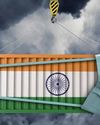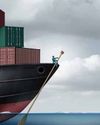Port of Antwerp, the most promising port in Europe, is expanding infrastructure in line with growing cargo volumes. Jacques Vandermeiren, CEO, of the port, in a one-to-one with Ramprasad, Editor-in-Chief, Maritime Gateway, details on the expansion plans of the port and their interest to be part of India’s growth story.

Q Port of Antwerp has shown some interesting growth in 2017. What has been driving this growth?
The growth we have posted this year is a continuation from the previous years (2015&16). In Europe you will notice that other ports are not doing that well compared to the Port of Antwerp, in the last two years. The main driver of growth is the confidence of customers in our services and we are sure this growth will continue in the years to come. But we have, of course, to tackle our challenges and one of them is the congestion within the port, and especially when it comes to containers we have seen that we had a few difficult months. This was particularly due to the move from right bank to the left bank, which is an impressive movement within a port. Our growth figures would have been even stronger, but we lost a bit of transhipment to other ports in Western Europe, but we hope we can get them back.
Moving cargo to the harbour and then shipping it to Rotterdam was difficult, mainly due to the difficulties at the inbuilt terminal at the beginning of this year. But we saw huge volumes coming in and it took them about six months to organise themselves. Due to this congestion we lost some teus to other ports. But other segments like Ro-Ro and liquid bulk have shown very strong figures this year.
Q The rate of growth the port has posted over the last few years must have put a lot of pressure on the capacities and infrastructure. Do you have any plans to boost capacities?
We are planning to increase container capacity within the port.
This story is from the December 2017 edition of Maritime Gateway.
Start your 7-day Magzter GOLD free trial to access thousands of curated premium stories, and 9,000+ magazines and newspapers.
Already a subscriber ? Sign In
This story is from the December 2017 edition of Maritime Gateway.
Start your 7-day Magzter GOLD free trial to access thousands of curated premium stories, and 9,000+ magazines and newspapers.
Already a subscriber? Sign In

Impact Of Covid-19 On Shipping And Logistics
Industry stalwarts discuss threadbare the prevailing logistics and supply chain scenario and issues in clearing cargo during the COVID-19 lockdown

Digital Platforms Defy Lockdown
Digital trading modules such as eNAM are enabling farmers to move their produce from farm to market even during the lockdown

GARMENT TRADE TRAMPLED
As retailers face a shutdown in US and Europe, the cascading affect has caused mass cancellation of orders in Bangladesh

TRADE RESUMES WITH CHINA
While India has allowed uninterrupted movement of imports into Nepal even during lockdown, China is reopening its borders as it emerges from the pandemic
LESS HUMAN INTENSIVE, MORE DATA DRIVEN
AI provides transformational opportunity for logistics industry by improving customer experience, operational efficiency, faster turnaround time and lower cost while ensuring security and transparency. Macro environment requires industry to transform to be less human intensive, agile and data driven, all of which can be accelerated by AI adoption, shares Gangadhar Gude, Founder & CEO, atai.ai

SHAKEN AND STIRRED
The COVID-19 pandemic has partially paralysed the logistics and supply chain, but the industry is still deterred to ensure supply of essentials continues

TRADE STUCK, ECONOMY SLOWS DOWN
Sri Lankan economy slows down as trade deficit widens and supply chain disrupts amidst lockdown

LENDING INTELLIGENCE TO SUPPLY CHAIN
If you’re shipping millions of dollars’ worth of pharmaceuticals, high-end electronics, expensive seafood, or precious metals, what would you be willing to pay for the ability to ‘ask’ your shipment where it is right now and whether it’s ok? What would you pay for a freight smart enough to raise an alarm before it spoils? Artificial Intelligence enables that and much more…

CONTAINER LINES SIGNAL ‘SOS'
As the per-unit cost of operations increases many lines are forced to blank sailings which has hit their bottom line real hard. The Government and Terminal Operators therefore need to actively consider reduction in Vessel Related Costs

IMO 2020 And The Covid-19 Curse
The COVID-19 outbreak has shaken and stirred the already volatile bunker market. While the refiners adjust their capacities and shipping lines choose their path to compliance, the market dynamics are yet to reach an equilibrium